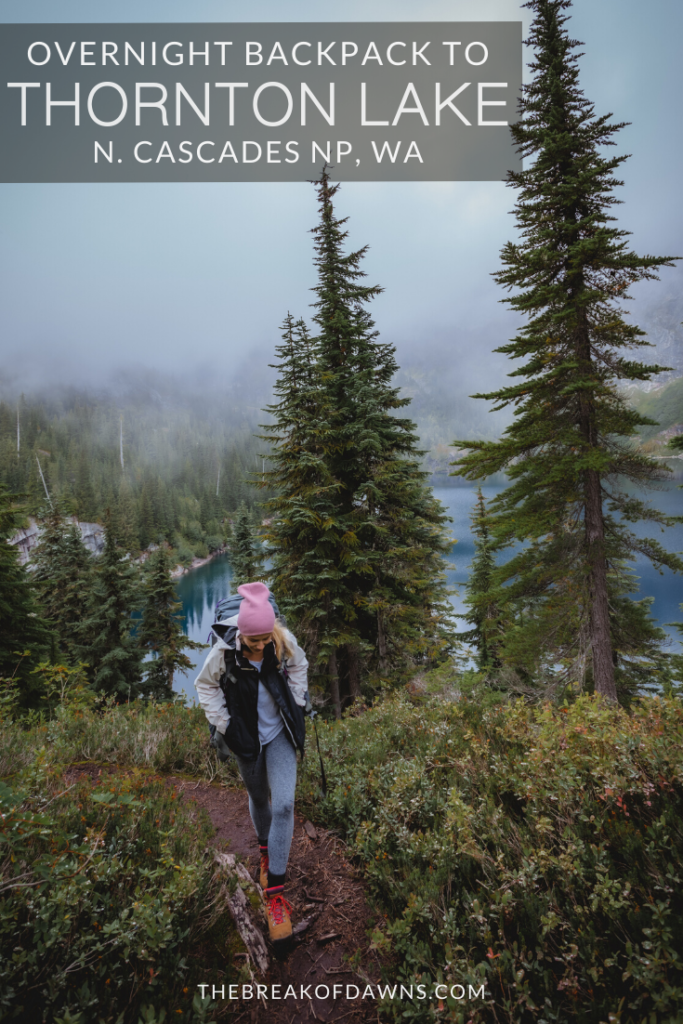
Trekking through the wilderness with just my feet and my backpack has quickly become my favorite way to travel, especially when it’s in places like Washington state. Looking to fill my soul with heart-pumping trails, cascading mountain views and alpine lakes, I found all of that and more just by backpacking to Thornton Lake in the North Cascades.
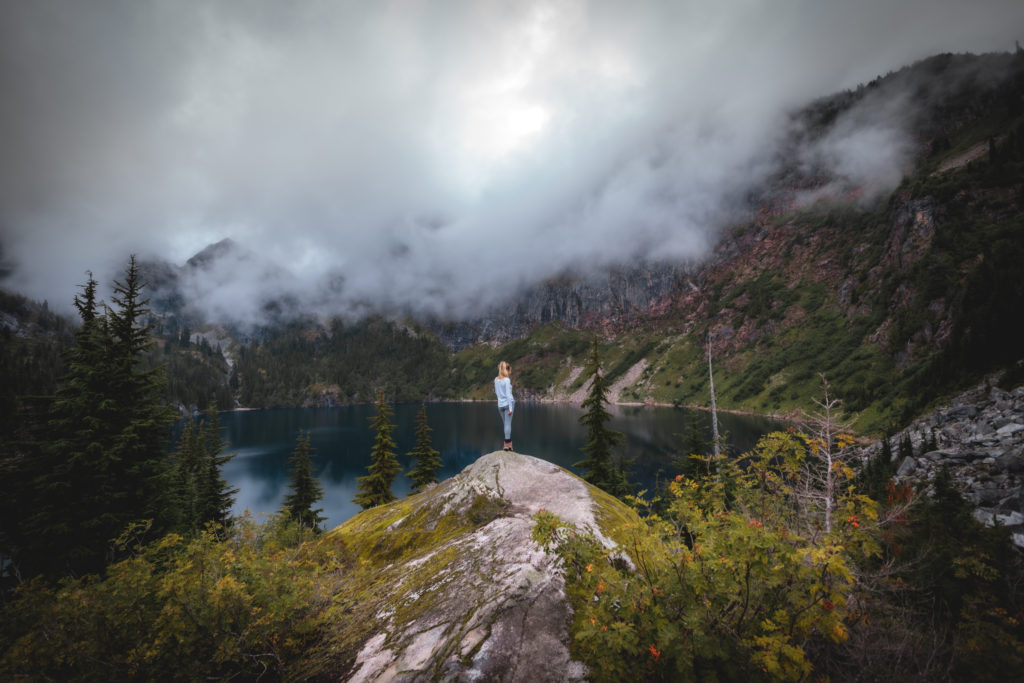
About the Thornton Lake Trail
As with most of the hikes in North Cascades, the Thornton Lake Trail is rated as difficult for its elevation gain in a short amount of time. At just over 5 miles, we climbed nearly +2750 feet in elevation within our 3 hour trek. At that time in my hiking journey, it was one of the steepest and drastic climbs I had done.
Check the NPS website here for current trail conditions in the park
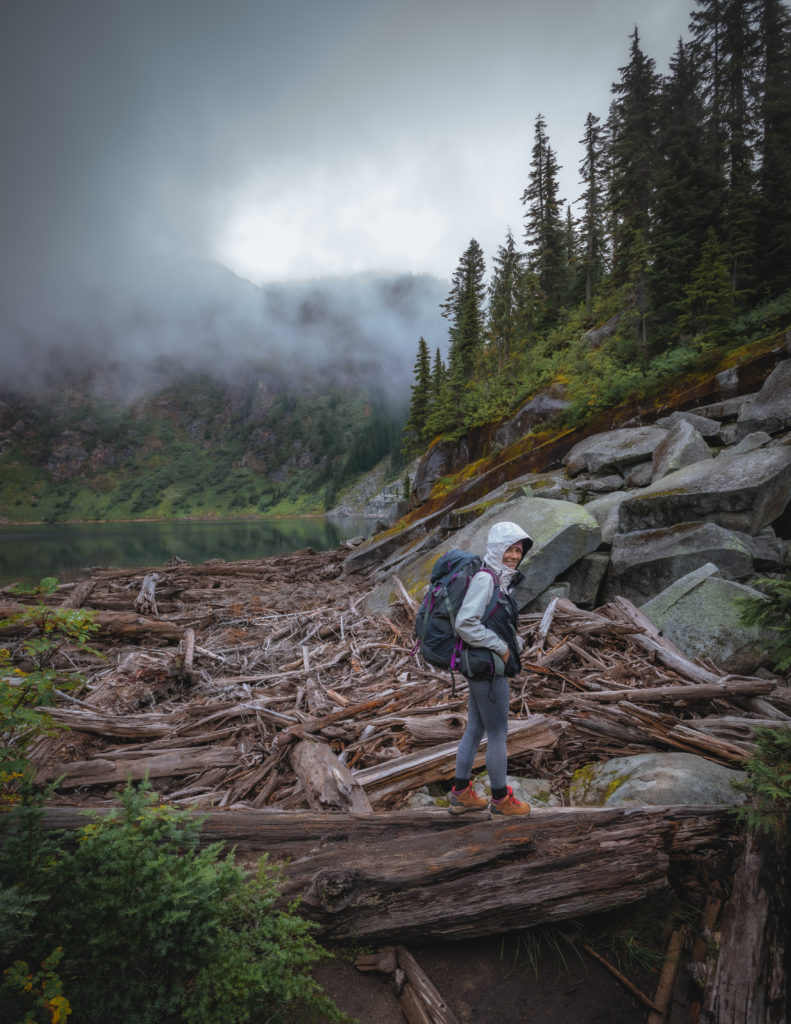
Overnight Backpacking Thornton Lake in North Cascades NP
Looking for a shorter overnight trek, backpacking Thornton Lake in North Cascades was actually recommended to us by a ranger. He told us it’s a great option for those wanting to spend just one night before hiking out.
Need some overnight backcountry gear? Click here for my full gear guide
A backcountry permit is required, although free, for all overnight stays in North Cascades NP and given on a first-come-first-serve basis. Since Thornton Lake only has 3 designated campsites, they can sell out quickly. We snagged our permits by walking up the day before at the Marblemount Ranger Station.
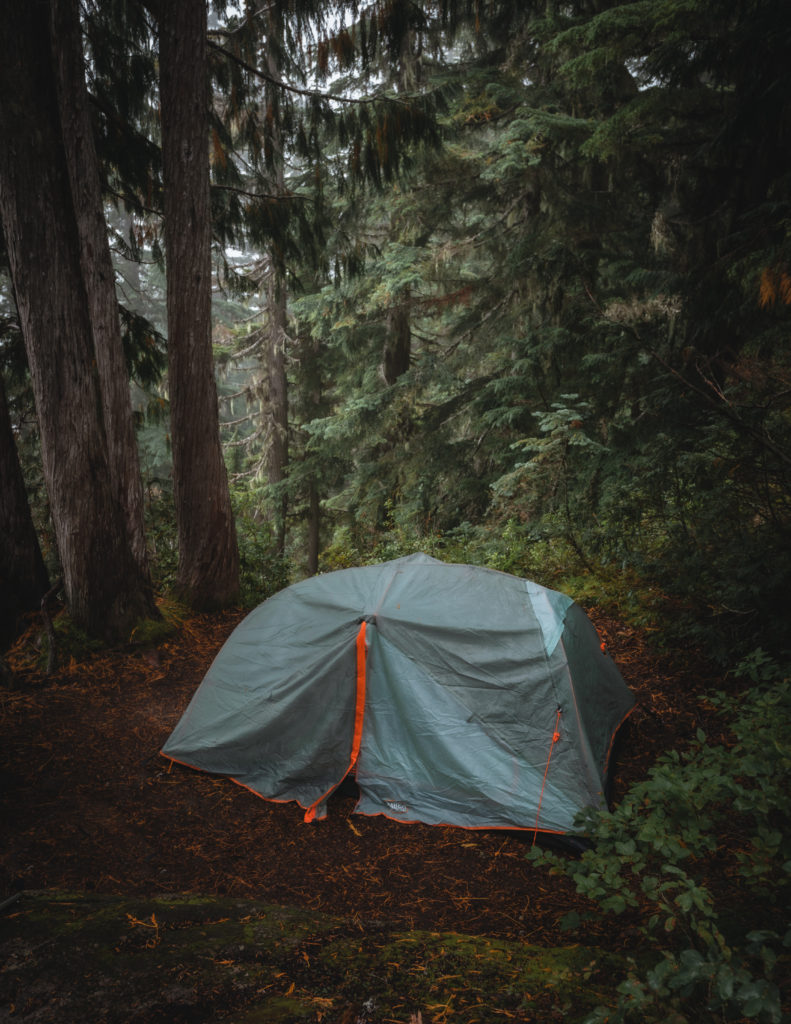
Washington state is bear country! Food and scented item storage is extra-important while in the wilderness here. Bear canisters must be used from June – November, which can be rented from the ranger station (learn more about proper storage in North Cascades here). Be sure you’re also following the Leave No Trace principles like pack it in/pack it out and staying on trail.
For more information on the backcountry in North Cascades NP, click here
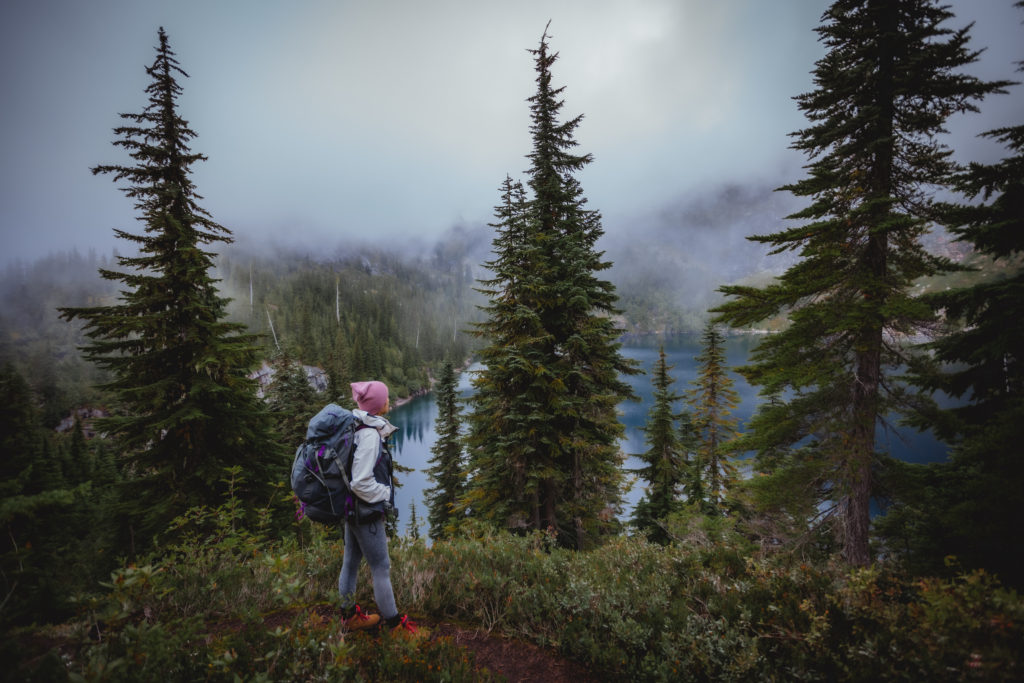
Hiking to Thornton Lake in North Cascades NP
Distance: 5.2 Miles
Type: Out & Back
Elevation Gain: +2,750 Feet
Best Time to Hike: June – October
Features: Alpine lake, wildlife, overnight backpacking. Not good for kids. Dogs on leash are allowed the first 4 miles.
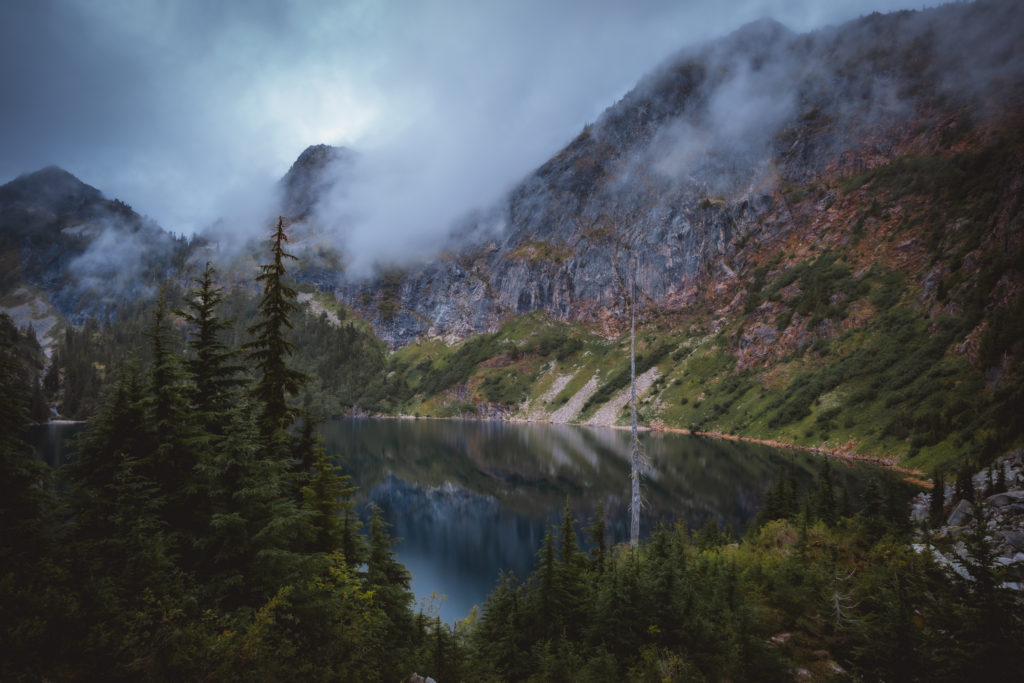
Getting to the Thornton Lake Trailhead
From Highway 20, turn on Thornton Lakes Road for 5 miles until you reach the gravel parking lot. This road up to the trailhead is rough and not recommended for low-clearance vehicles (directions to trailhead here). The Thornton Lake trailhead begins on National Forest Land so a Northwest Forest Pass is required for parking at the trailhead overnight. You can purchase a day or annual pass here or buy one at a ranger station.
Looking for a quick hike in North Cascades? Check out my blog on Blue Lake here
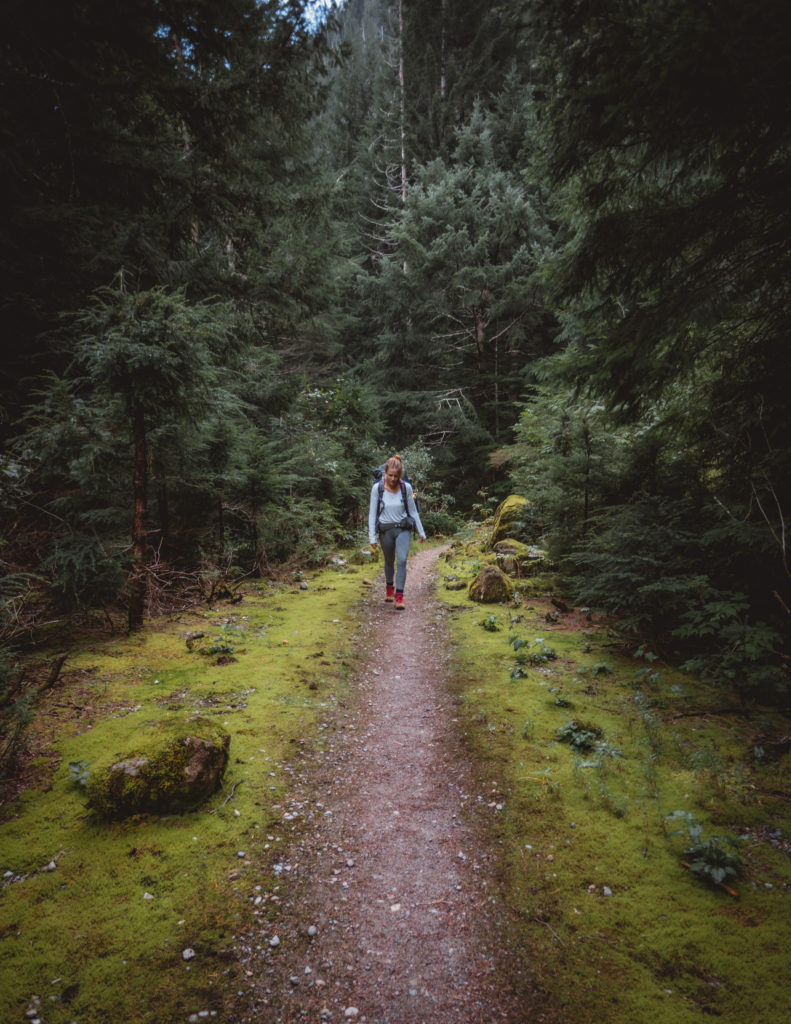
The Beginning of the Hike
The trail to Thornton Lake starts off by following an old road through a logging area that was used more than 60 years ago. With a vibrant mossy ground and sky-high trees, this simple part of the trek is very deceiving as its truly disproportionate to the rest of the hike. Soaking in the effortless elevation gain in the first 2 miles, we wind through the natural environment and cross creeks with wooden bridges.
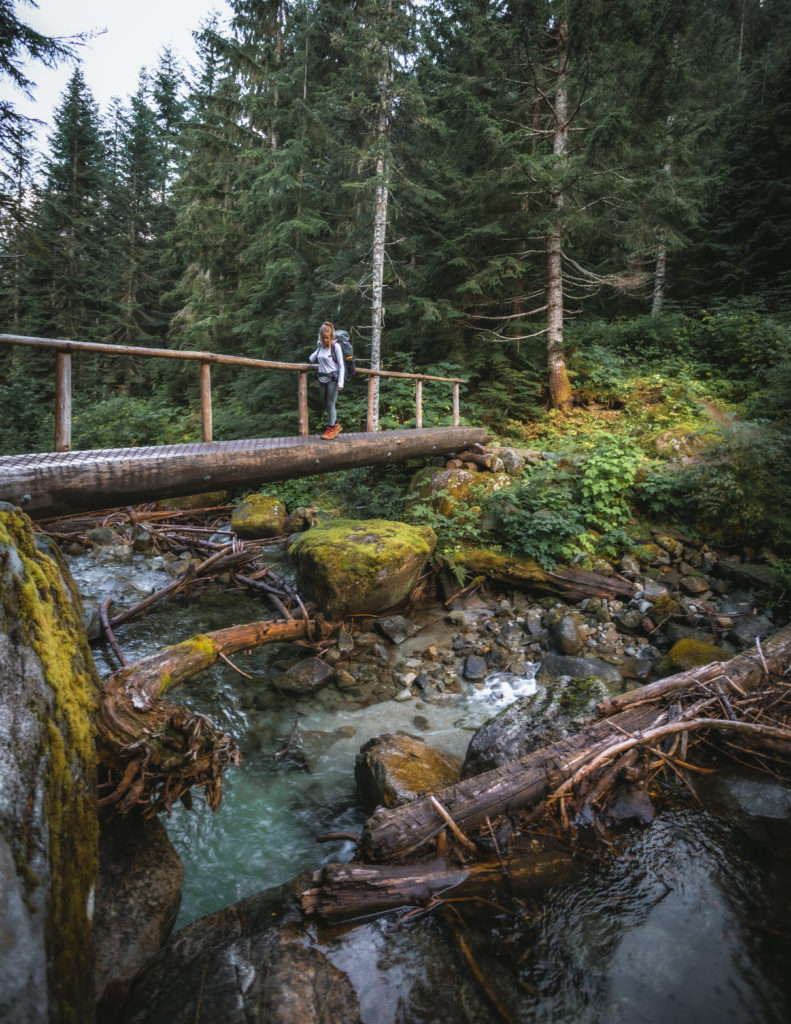
Elevation Gain
Once we hit mile 3, the trail instantly begins to climb. Within the 3rd mile alone, we climb over +850 feet. As we’re forced to step up and over tree roots, it feels like we’re at the gym doing the stair-stepper. The steep switchbacks begin and by that 4th mile the legs are definitely feeling it, especially with overnight packs on our back.
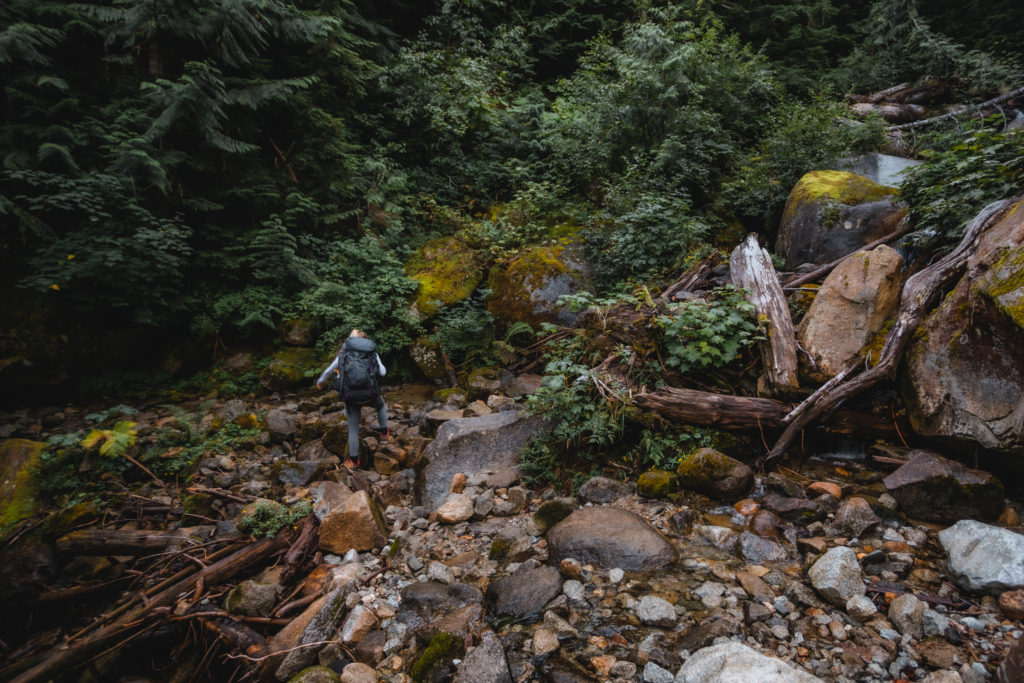
Trail Junction
4.5 miles into our hike and over +1800 feet in elevation gain, we finally reach the National Park boundary. There’s a trail junction around here as well; to the right is a difficult scramble route up to Trappers Peak and to the left is the main trail towards Thornton Lake.
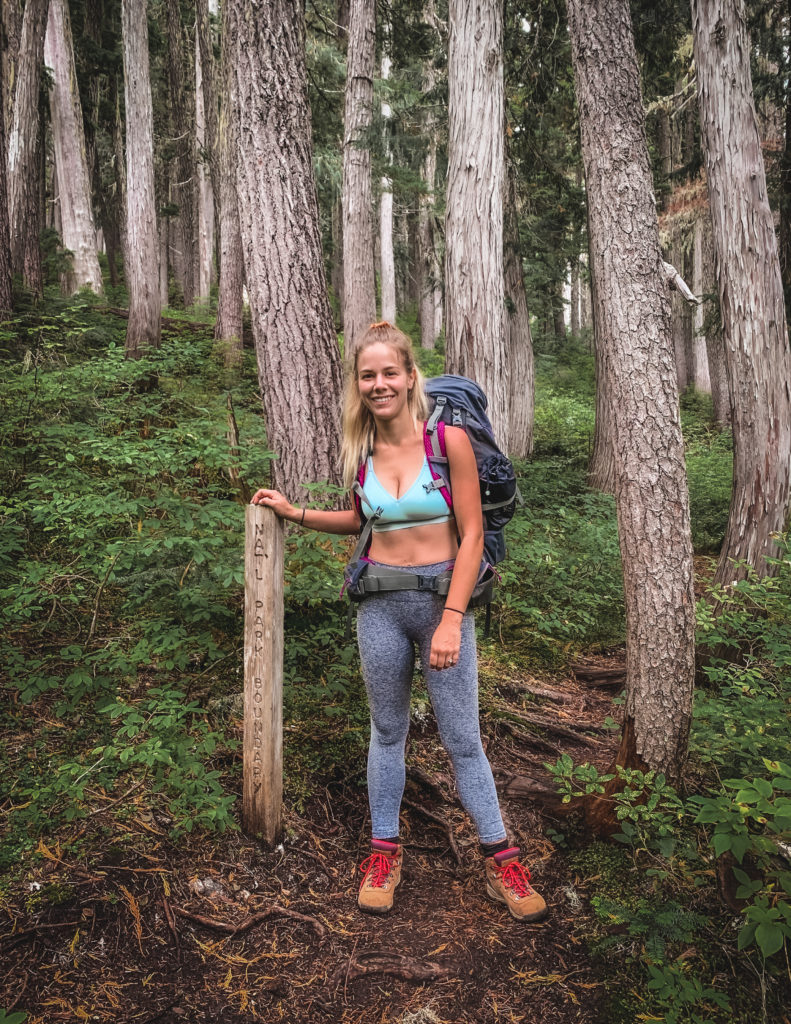
Reaching Thornton Lake
Following the trail up and over a granite ridge, we emerge on the other side through a pine-treed forest. Through the trees, we begin to see little peeks of blue, hinting that water lies beyond the ridge.
Read about hiking to my favorite lake in North Cascades here
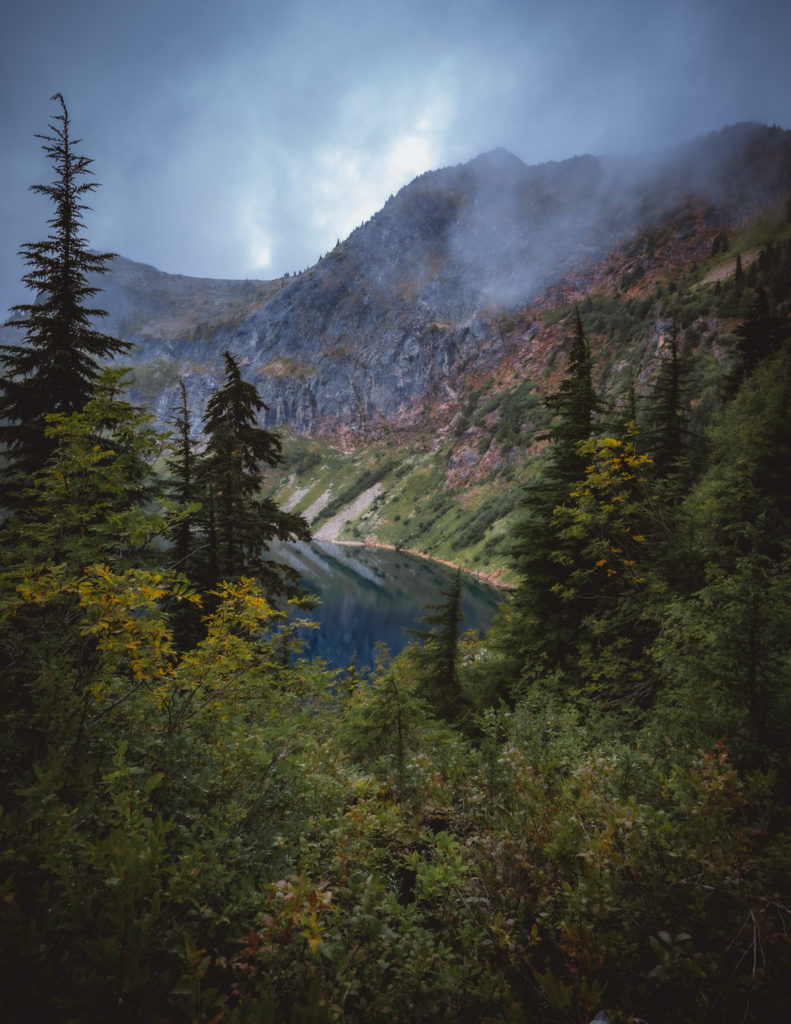
About a half mile from the campsite, my eyes fall upon one of the most stunning sights I’ve ever seen. The deep blue water of Thornton Lake divinely reflects the view of Triumph Peak in the distance, which is heavily blocked by the rolling clouds.
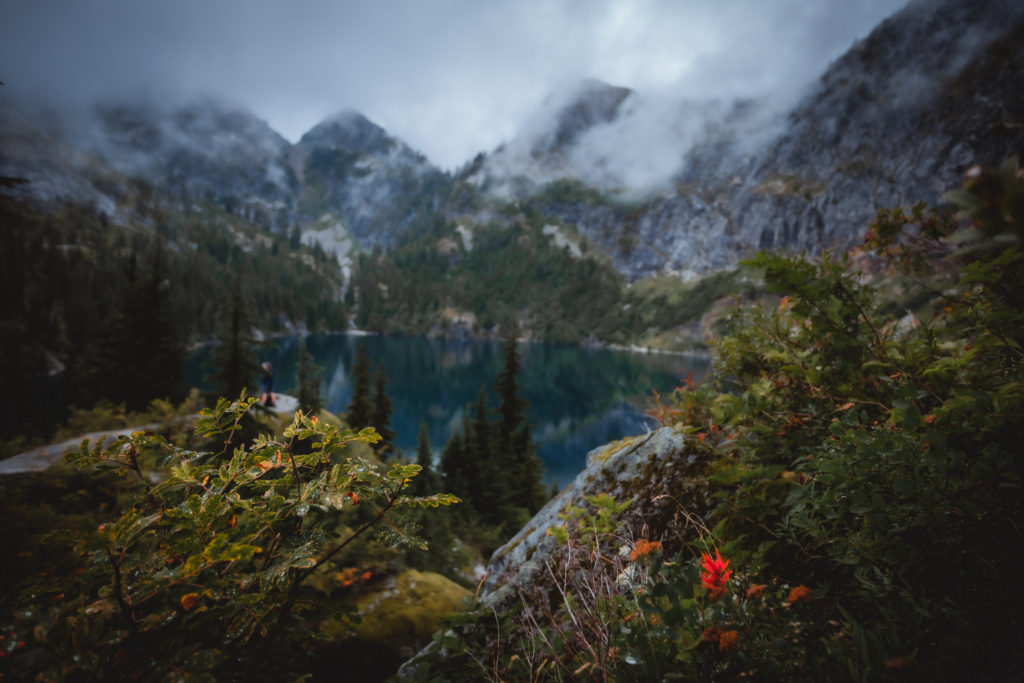
Crossing Thornton Creek to Camp
While standing on the ridge above the lake, we’re at 5000 feet above sea level. Thornton Lake sits at 4500 feet so we’ll have to descend that 500 feet in a steep half mile. Don’t be surprised if you have to use your hands and knees on this hike down, especially if you’re in a wet cloud like we were.
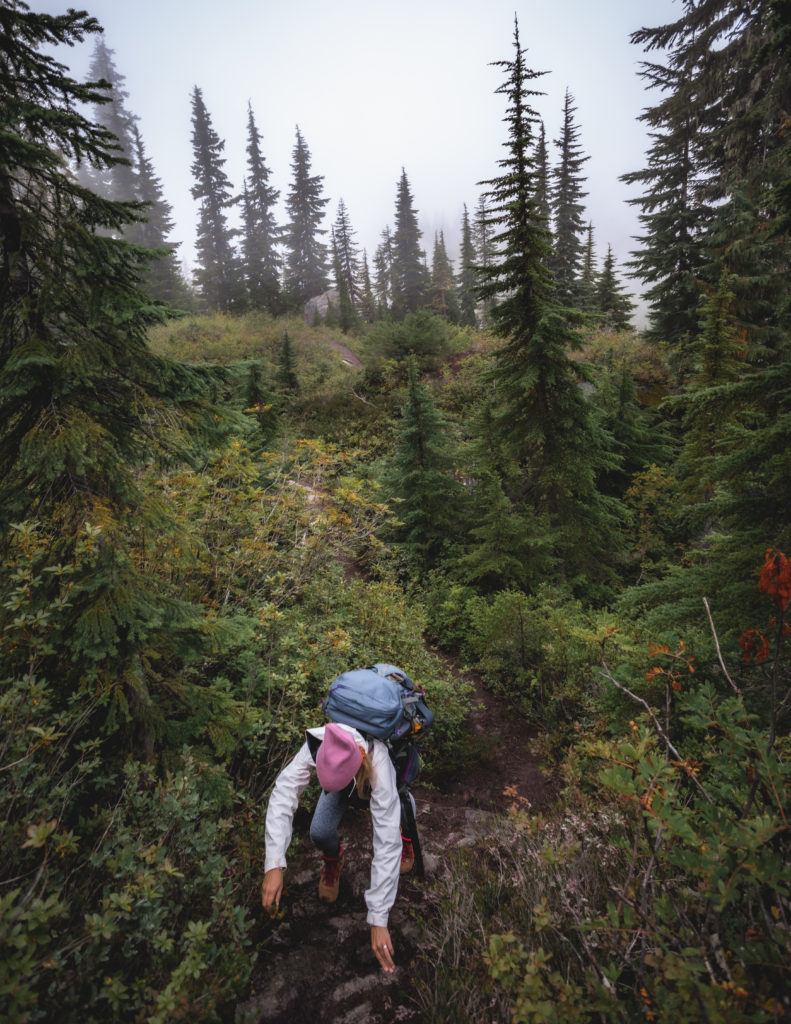
Campsites at Thornton Lake are actually over the logjam and on the other side of the creek. Once we descend down the ridge, we meet a massive pile of boulders that lie above a logjam. I was literally saying out loud ‘There’s NO WAY this is the way to go!’ Slowly and carefully, we make our way down the slippery boulders and on top of the logs.
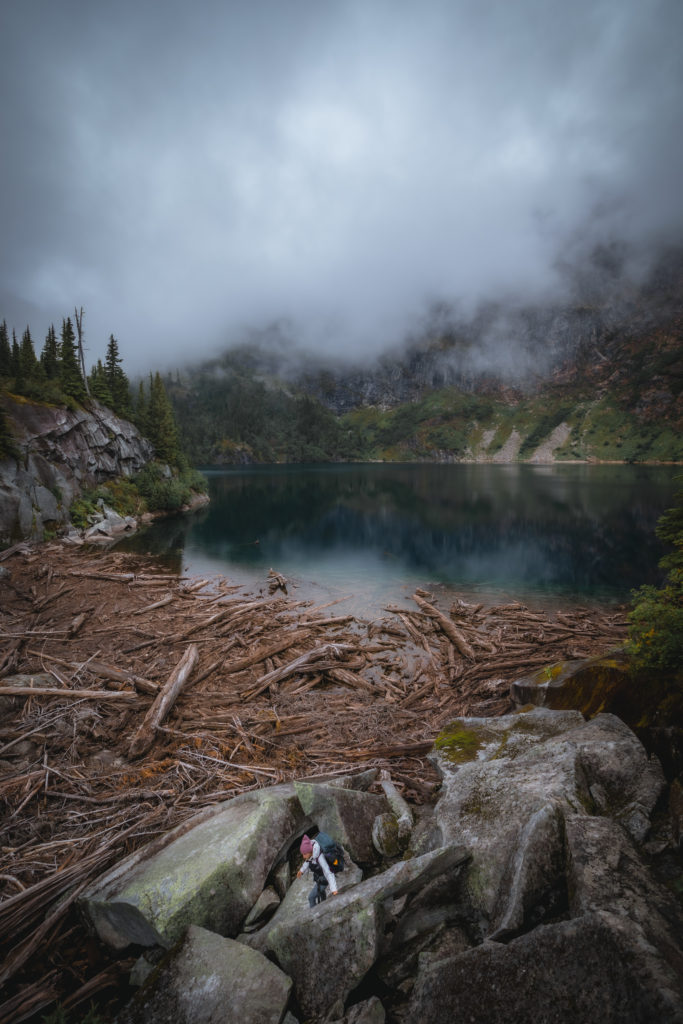
Take extra caution when climbing through this area. The logs are extremely rotted and unstable so it’s very easy to fall through. Although you’ll only be about knee-deep in mud, it’s still good to take your time and watch your step.
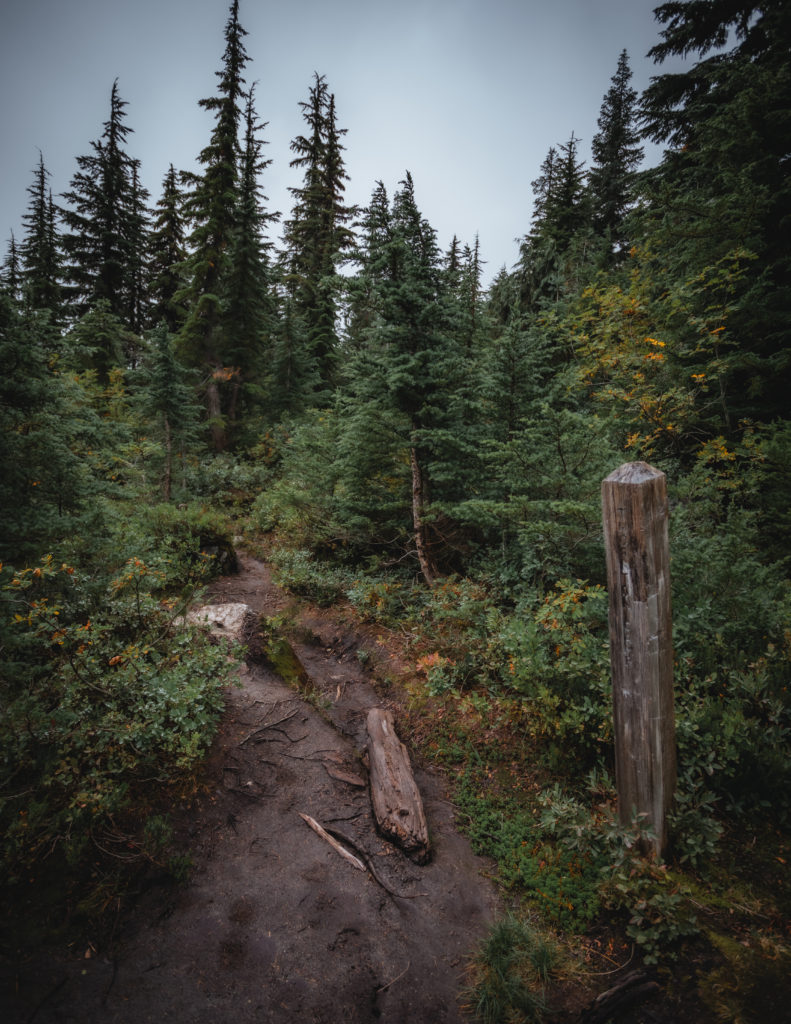
Reaching the Thornton Lake Campsites
Crossing over the logs and up to the next ridge, we can see the wooden posts with faded words indicating we’ve made it to camp. The best campsite of the 3 has the most tree coverage, something that is a luxury in the rain.
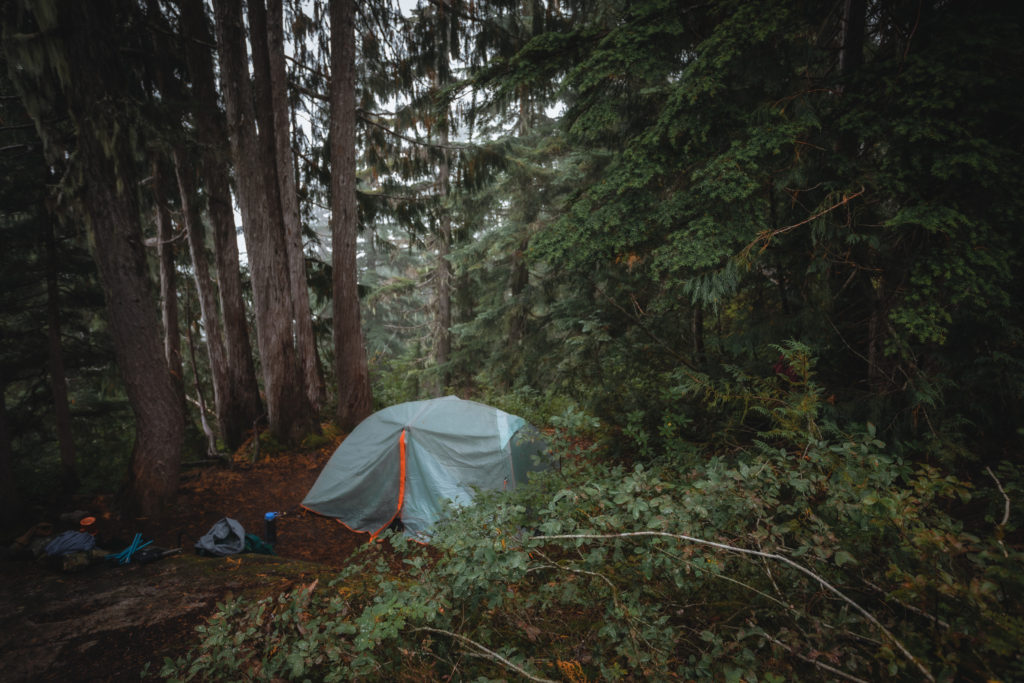
To find this camp, take the trail up to the right and follow it to the left. Just over the large boulder is a perfect spot to pitch your tent. The pit toilet to Thornton Lake is uphill past the next campsite you’d come to from here.
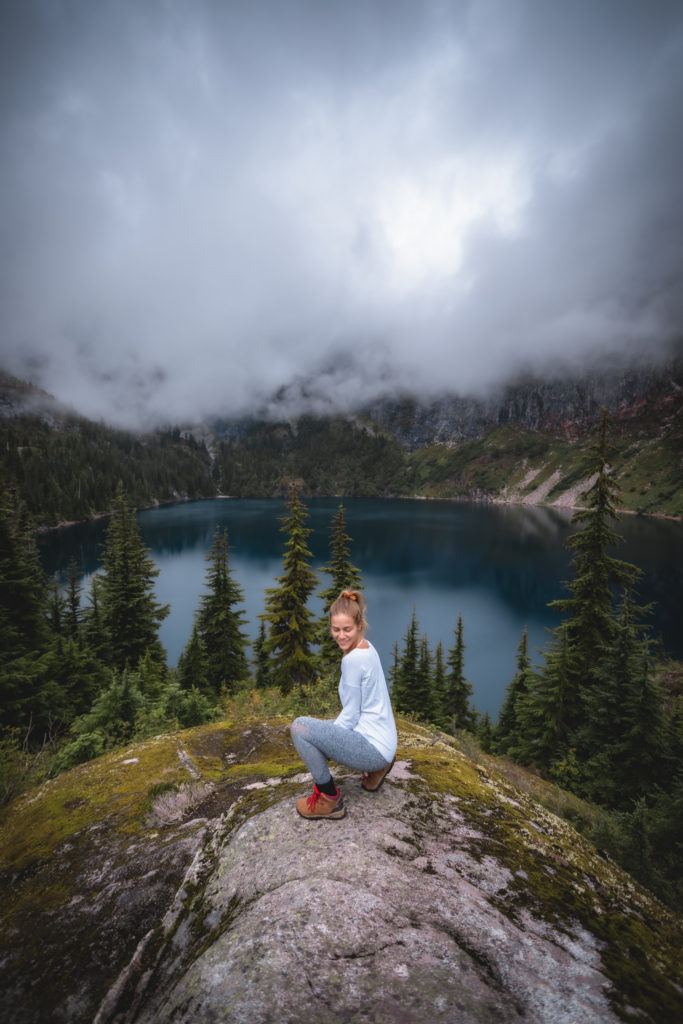
Hiking Options from the Thornton Lake Camp
Our original plan was to stay 2 nights at Thornton Lake and spend the day between doing some hiking. Because of the constant torrential downpour we experienced, we decided to hike out the next morning instead. If we had stayed, we would have hiked one of two trails:
- Trappers Peak: The first option is what was mentioned earlier, the scramble route up to Trappers Peak. While it’s only around 1.5 miles from camp, the elevation gain is nearly +1500 feet.
- Upper Thornton Lake: Thornton Lake is actually the lower of 3 lakes in this area. The second option for a day hike consists of trekking to the others. While Upper Thornton Lake is only about 1.5 miles away, there’s no marked trail so only hike to them if you’re prepared.
Check out the best day hike in North Cascades here
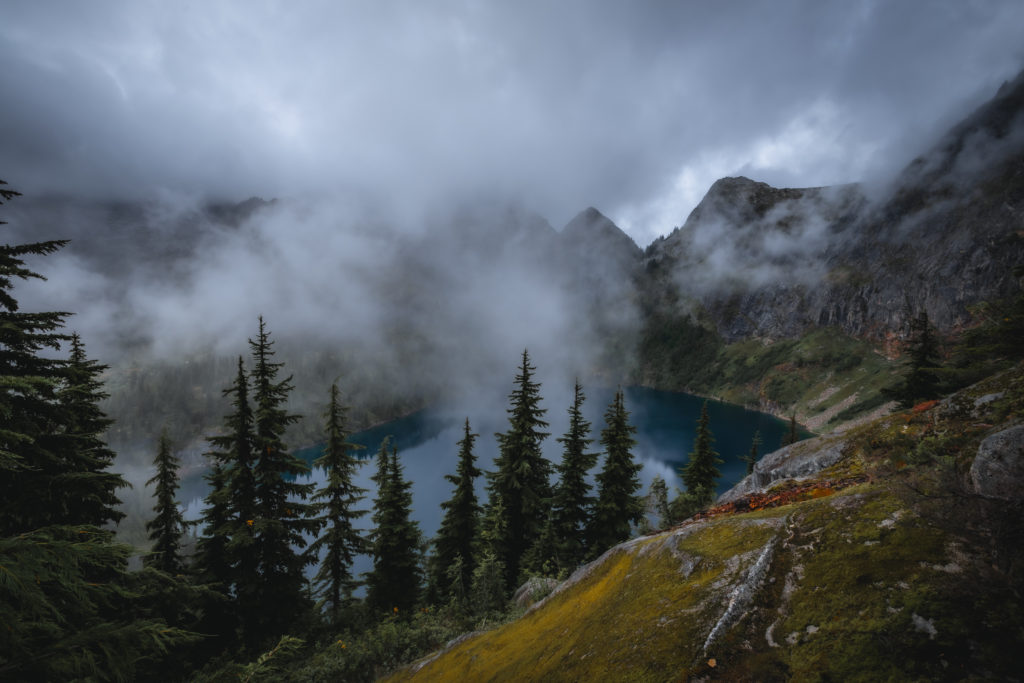
Before heading into the backcountry, it’s imperative that you’re familiar with the “Leave No Trace” principles.
Read More: Leave No Trace: The 7 Rules of the Backcountry
Learn more about Leave No Trace on their website here.
Like This Post? Pin It!
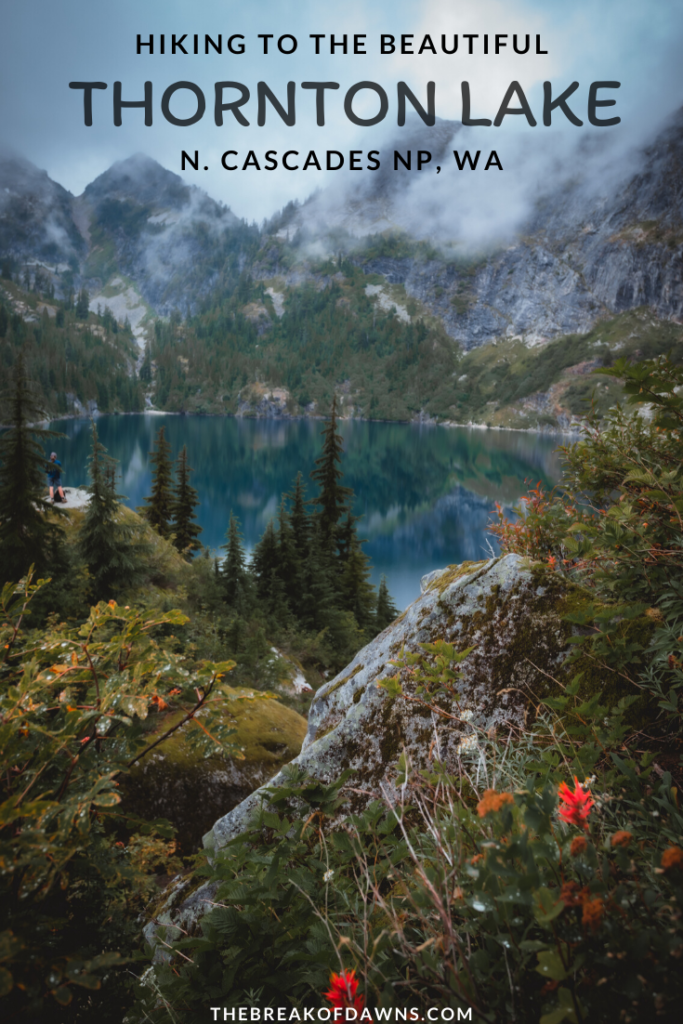
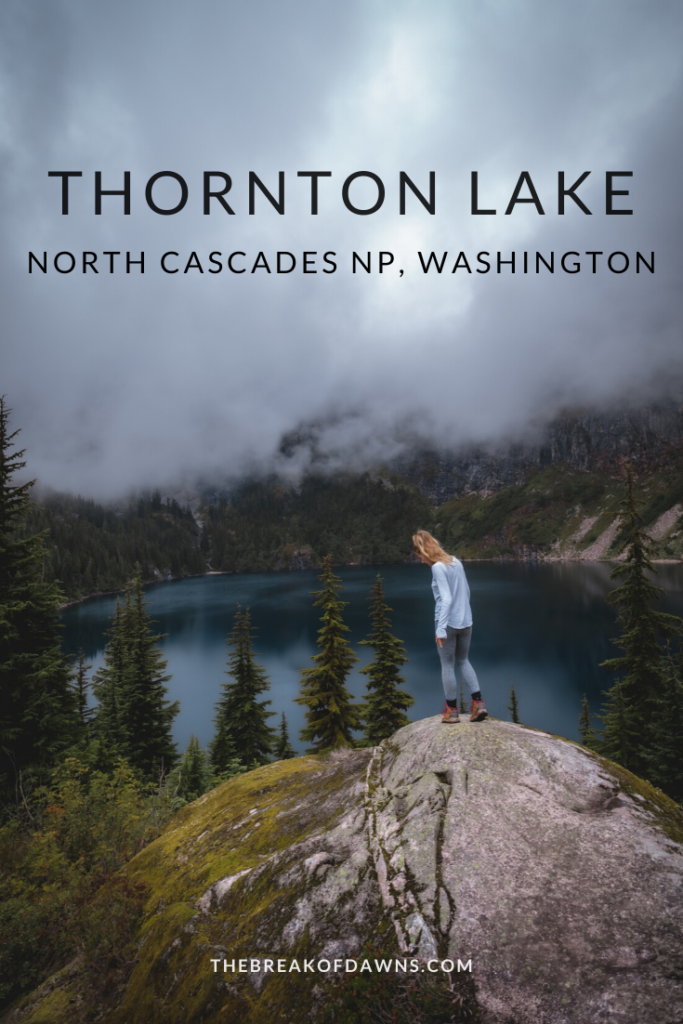
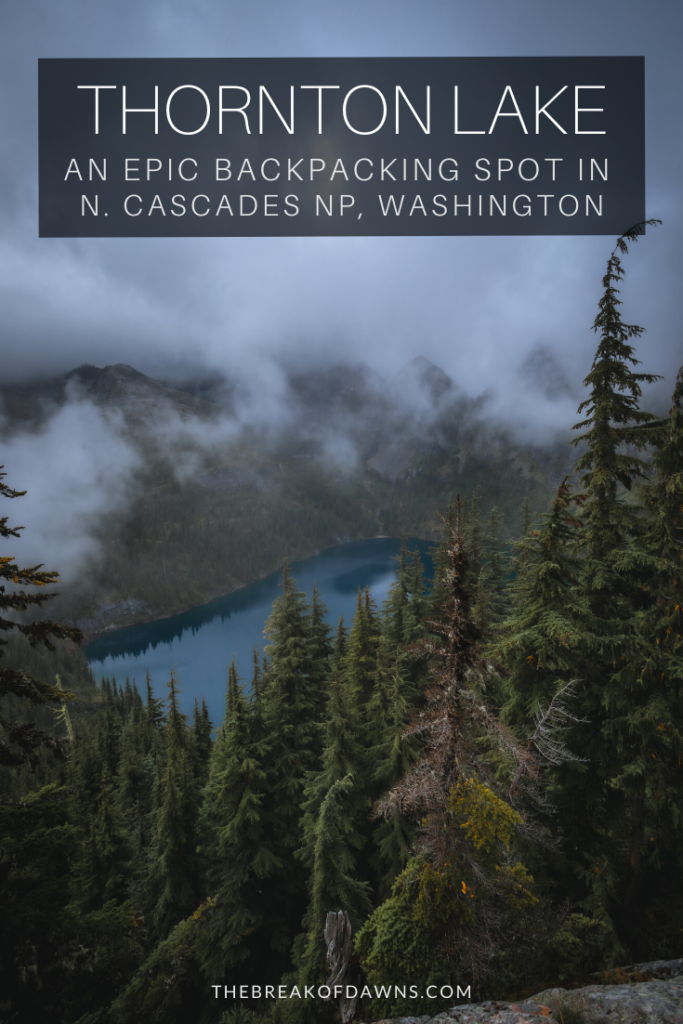

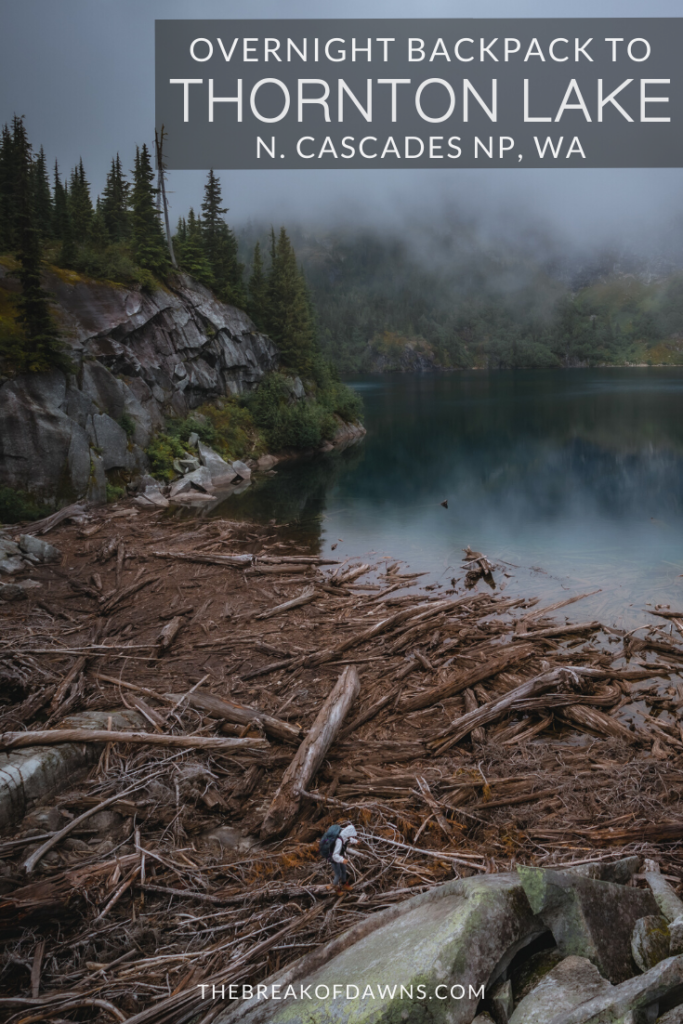
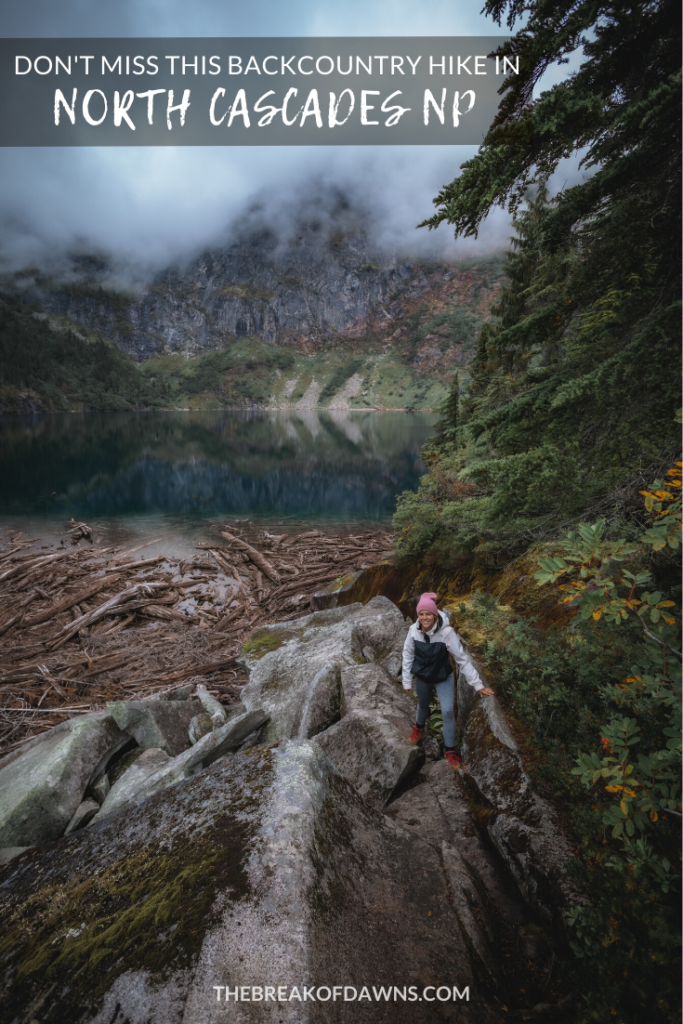
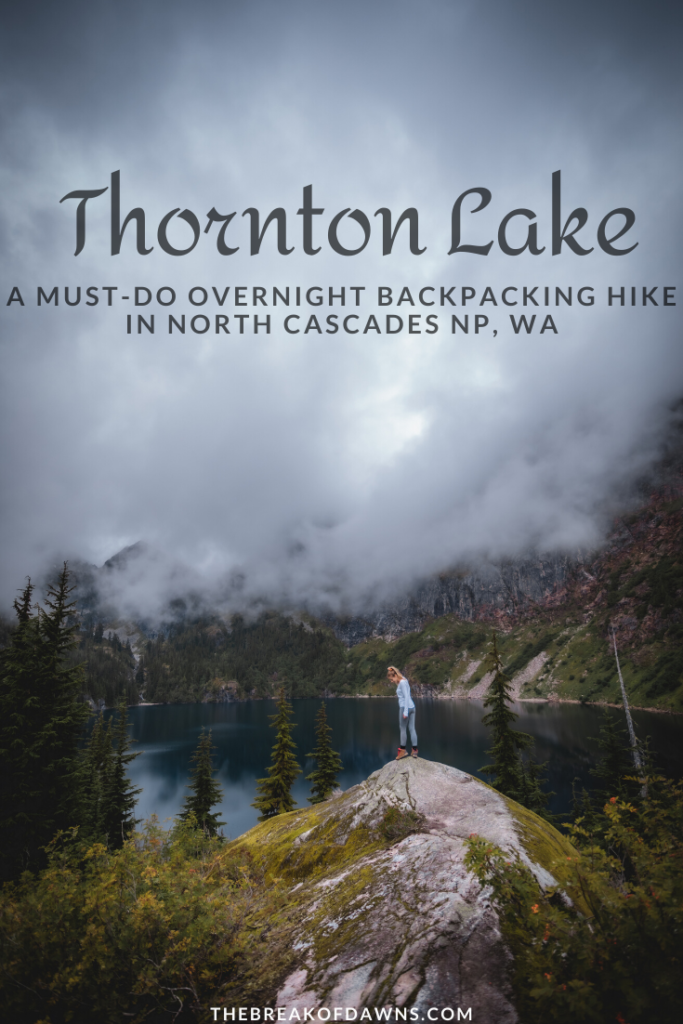
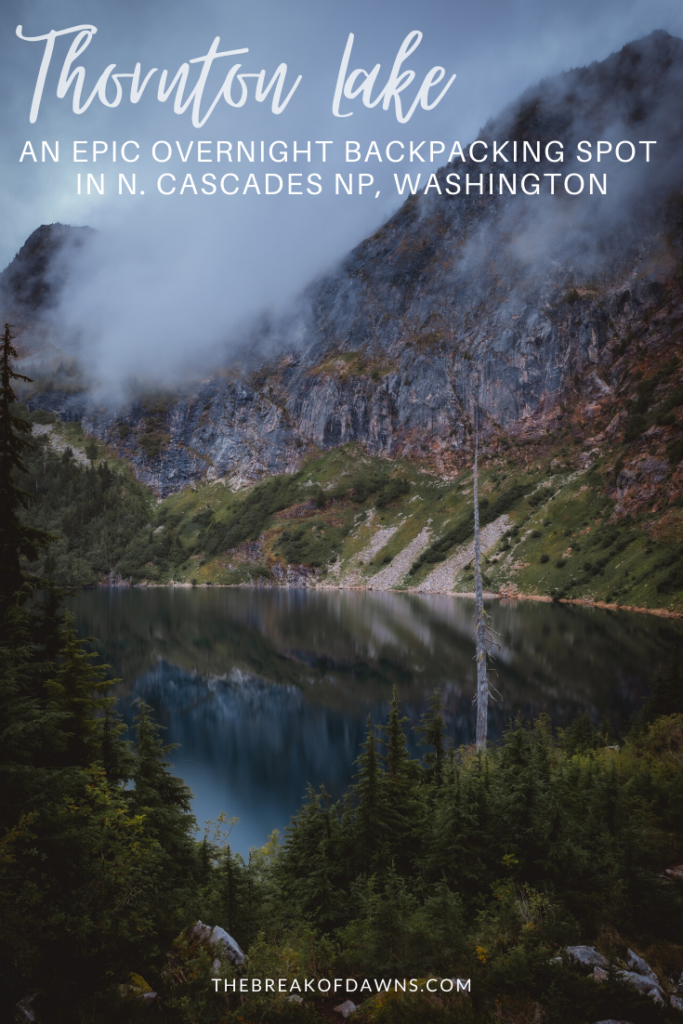
| This post contains affiliate links. At no extra cost to you, if you purchase one of these products I may receive a small commission. This helps me maintain my blog as a free space to you. Check out my Disclaimer for more info.

